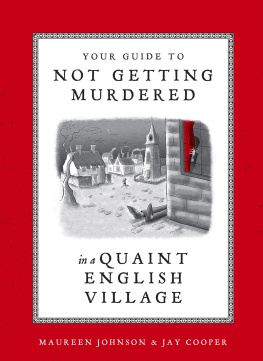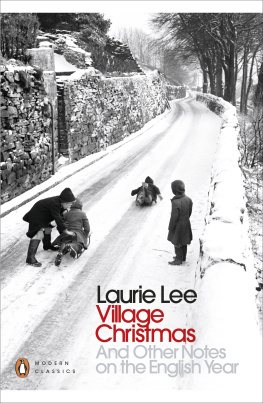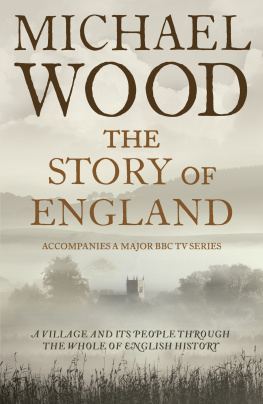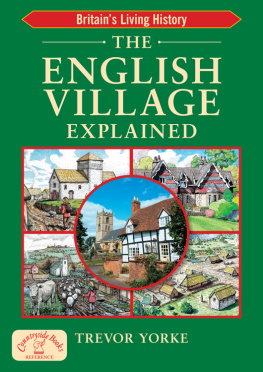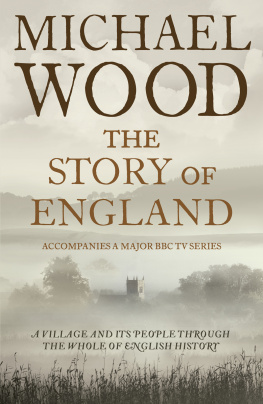
The International Library of Sociology
URBAN AND REGIONAL SOCIOLOGY
In 13 Volumes
| I | An Approach to Urban Sociology | Mann |
| II | City and Region | Dickinson |
| III | The City Region in Western Europe | Dickinson |
| IV | English Rural Life | Bracey |
| V | New Dubliners | Humphreys |
| VI | The Personality of the Urban African in South Africa | de Ridder |
| VII | The Regions of Germany | Dickinson |
| VIII | Revolution of Environment | Gutkind |
| IX | Rural Depopulation in England and Wales 1851 - 1951 | SaviUe |
| X | The Social Background of a Plan | Glass |
| XI | The Sociology of an English Village: Gosforth | Williams |
| XII | The West European City | Dickinson |
| XIII | Westrigg | Littlejohn |

First published in 1956 by
Routledge
Reprinted 1998, 1999, 2000, 2002 by
Routledge
2 Park Square, Milton Park, Abingdon, Oxon, 0X14 4RN
Transferred to Digital Printing 2007
Routledge is an imprint of the Taylor & Francis Group
1956 W. M. Williams
All rights reserved. No part of this book may be reprinted or reproduced or utilized in any form or by any electronic, mechanical, or other means, now known or hereafter invented, including photocopying and recording, or in any information storage or retrieval system, without permission in writing from the publishers.
The publishers have made every effort to contact authors/copyright holders of the works reprinted in The International Library of Sociology,
This has not been possible in every case, however, and we would welcome correspondence from those individuals/companies we have been unable to trace.
British Library Cataloguing in Publication Data
A CIP catalogue record for this book is available from the British Library
The Sociology of an English Village: Gosforth
ISBN 0415177073
Urban and Regional Sociology: 13 Volumes
ISBN 0415178304
The International Library of Sociology: 274 Volumes
ISBN 041517838X
ISBN 978-1-1362-5914-2 (ePub)
Publishers Note
The publisher has gone to great lengths to ensure the quality of this reprint but points out that some imperfections in the original may be apparent
To
KATHLEEN AND JUDITH
MAPS AND TEXT FIGURES
1 Fragmentation of holdings
2 Kinship and the individual
3 Kinship in Gosforth
4 The social classes
5 Friendship configurations
6 Associations and social class
7 Office-holders and social class
8 Age, marital status, and social class of persons attending public houses
9 Co-operation among farmers
10 Gosforth in 1600
11 Gosforth in 18 io
12 Townships
T HE people of Gosforth found it difficult to understand why I had chosen their parish. The University of Wales, where I was working at the time, seemed to them remote, if indeed it existed at all. The answer is that I wished to carry out a study of a parish in NorthWestern England; a preliminary survey in West Cumberland showed that Gosforth was one of three parishes which were of the size of population and of a sufficiently remote location to seem worthy of fulltime study over a period of about eighteen months. Gosforth was finally chosen because of its long history and because it contained both a village and scattered farms. The fieldwork took place between July 1950 and February 1952, and further fieldwork was carried out in the summer of 1953.
The success of the study is due in very large measure to the kindness and cooperation of the Gosforth folk. More often than not I arrived at their homes at the most inconvenient time; many of my questions were extremely personal; many of my requests for information involved considerable work. Throughout my stay, however, I found the hospitality which is so important and attractive a characteristic of the area. A great many people went to a great deal of trouble to help in the investigation. In particular I should like to thank Mr. Will Wilson, the Headmaster of Gosforth School, Mr. Harry Simpson, the Parish Clerk, Mr. Tom Moore, Mr. Matthew Singleton, Mr. Jacob Williamson and Mr. William Poole.
I owe a special debt of gratitude to my former teacher Mr. Alwyn D. Rees of the University College of Wales, Aberystwyth. His teaching first aroused my interest in rural sociology and his advice was of immeasurable help during the fieldwork and the analysis. Also I should like to thank Professor Shils of Chicago, Professor Homans of Harvard and Professor Gluckman of Manchester for their help and encouragement.
Most of all I record my gratitude to my wife, who made the fieldwork possible. Her help and encouragement have been invaluable always.
W. M. WILLIAMS
University College of North Staffordshire.
October 1955
T HE civil parish of Gosforth, covering an area of just over eleven square miles, lies on the western fringe of the Lakeland fells of Cumberland. About two miles from its western boundary is the Irish Sea, while to the north and east stand the moorlands and peaks of Copeland Forest and Eskdale, uninhabited save for hardy flocks of Herdwick sheep. The landscape of the parish reflects its position between the Lakeland hills and the undulating coastal plain, which extends from Millom in the extreme south of the county to Carlisle in the north. The southern half of Gosforth is a gently undulating plain rarely rising above 150 feet: the northern portion forms the seaward face of the western fells and the land rises north and north-east to over 900 feet on Bleng Fell and Hollow Moor. In common with all the western dales there are no sharp peaks, and the one valley which bisects the moorland is narrow and steep-sided, with a small development of flat land on the valley bottom through which runs the River Bleng.
Apart from a narrow belt of alluvium along both sides of the lower stretches of the Bleng, the 200-foot contour divides the parish roughly into a southern lowland of New Red Sandstone and a northern upland of andesite, with a small area of granite on the highest portion of Hollow Moor.
The intermediate position of the parish is also evident in its area, and in the size and distribution of its population. In Cumberland as a whole, small parishes with a relatively high density of population are typical of the lowlands and the North, while the moorlands are characterized by very large parishes with a few scattered farmsteads and cottages. Gosforth is much larger than the average coastal parish and much smaller than the fell parish. Moreover in many of the smaller parishes the population is concentrated almost entirely in nucleated settlements, while the inhabitants of the fell parishes live mainly in isolated farms. In Gosforth nearly two-thirds of the people live in the village, and the remainder in farmsteads and cottages dispersed throughout the parish.









